
Leather accessory box from Kvadrat/Raf Simons.
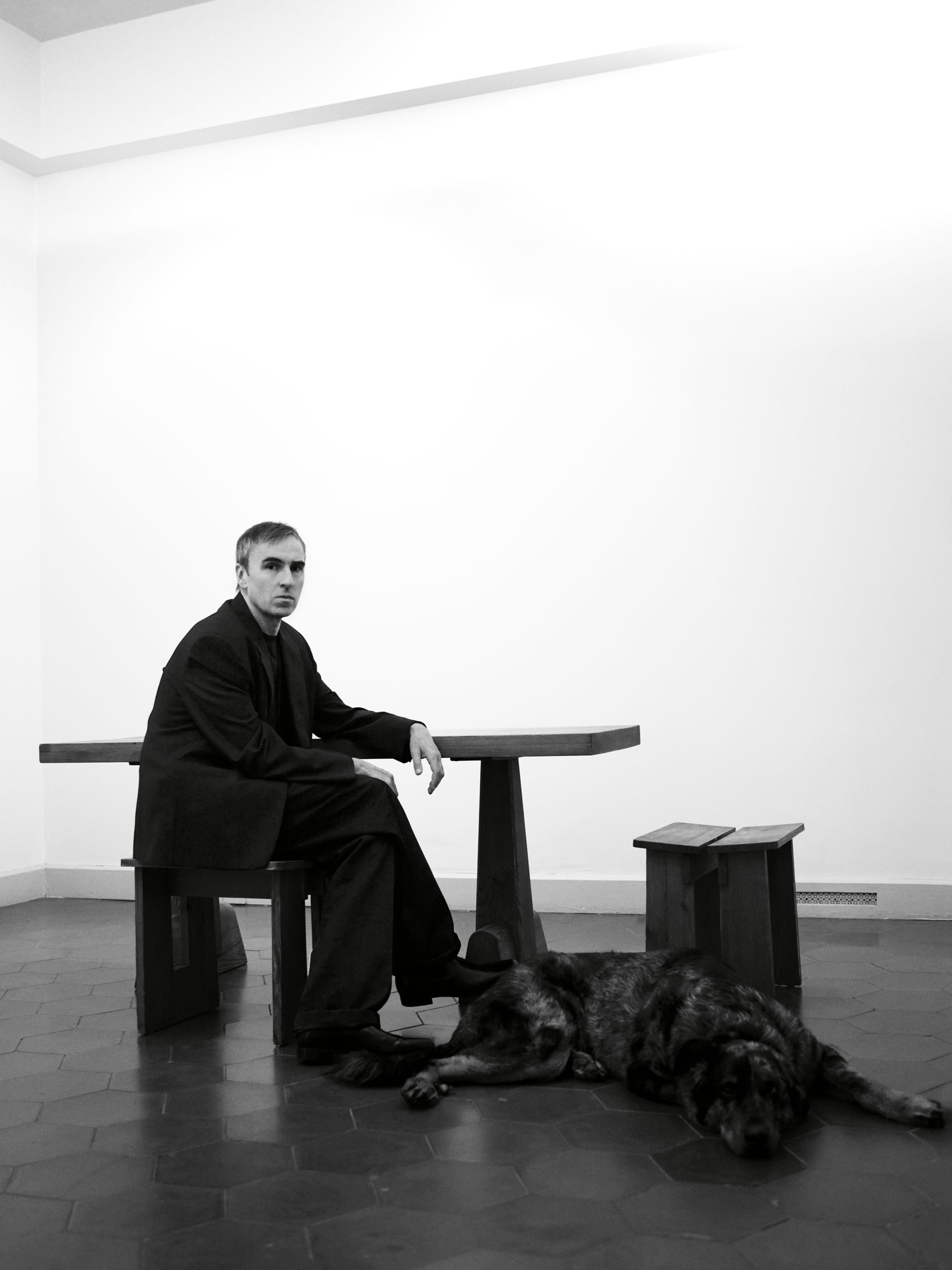
Portrait of Raf Simons by Willy Vanderperre.
“Good morning, Mr. Simons.” Raf Simons solemnly makes his way into the room at a seraphic pace, his face well-rested — it’s Saturday morning —, dressed in an oversize black Prada suit and cowboy-ish boots that I suspect are from Prada’s Spring/Summer 23 collection, which Mr. Simons, co-designed with Miuccia Prada. “Oh, just call me Raf.” I’m seated in a mid-century armchair in a small parlor room at Raf Simons’s Milanese residence facing a green marble-framed fireplace, and a round coffee table populated with a bottle of still water (my request), a pack of Vogue Super Slims Blue (not my request), a metallic ashtray, and a plain black Bic lighter. This set-up appears to be consistent across every table arrangement in the lower ground of the house. Other notable elements in plain sight: a gigantic Wolfgang Tillmans from his Freischwimmer series of abstract works. I ask Raf if he lives here permanently. “Lately it’s been three weeks in a month,” he says. “It used to be half-half, but Miuccia [Prada] was like ‘come more, come more,’ so now I’m three weeks in Milan, one week in Antwerp.” The house is beautiful, grandiose, exquisitely bourgeois, Milanese and Parisian at the same time, aristocratic. We transition from the intimate sitting room to the main salon, which he rightly feels is more appropriate for our chat — we’re both in press mode, after all.

Leather accessory box from Kvadrat/Raf Simons.
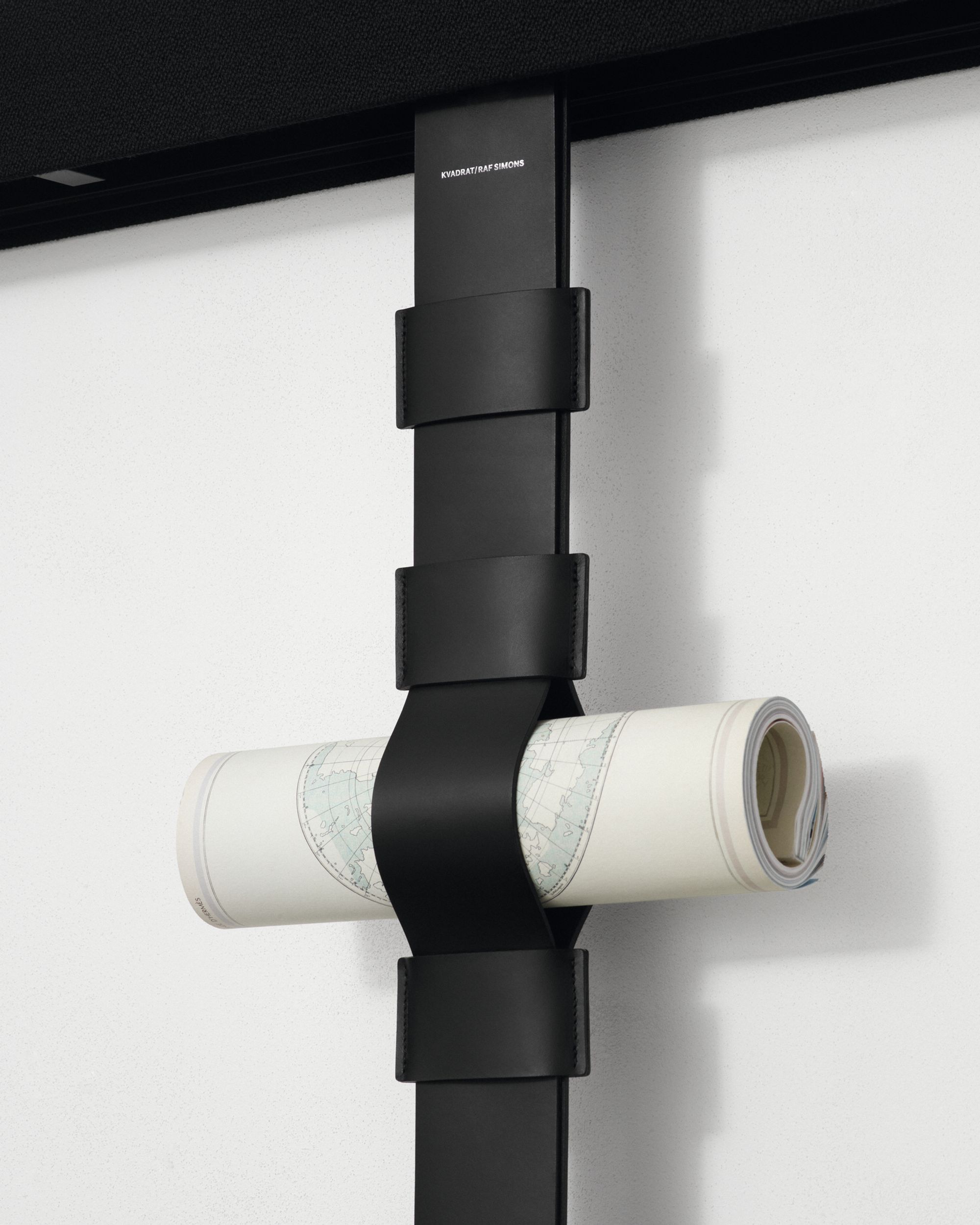
Leather magazine strap from Kvadrat/Raf Simons.
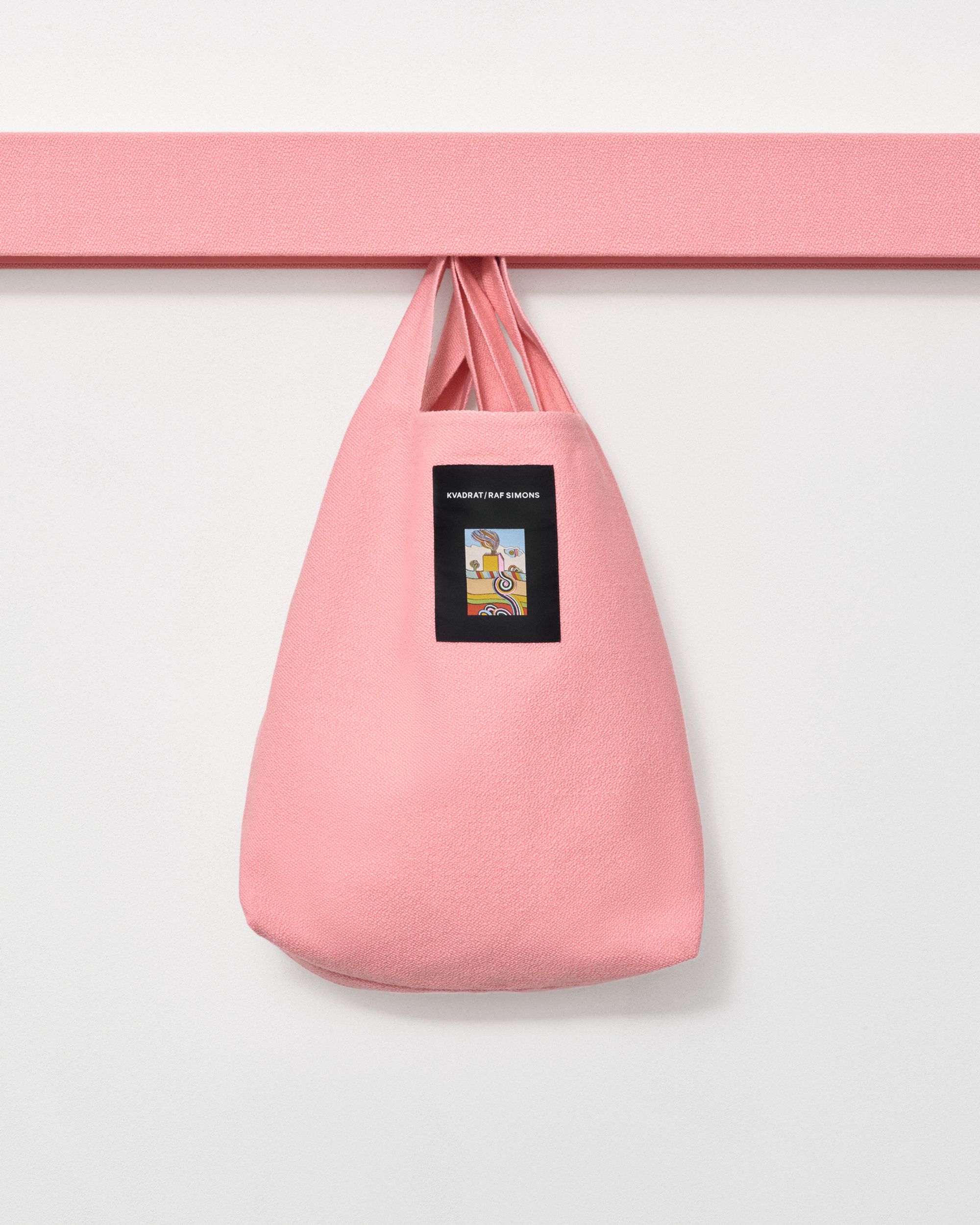
Vidar shopping bag in pink from Kvadrat/Raf Simons.
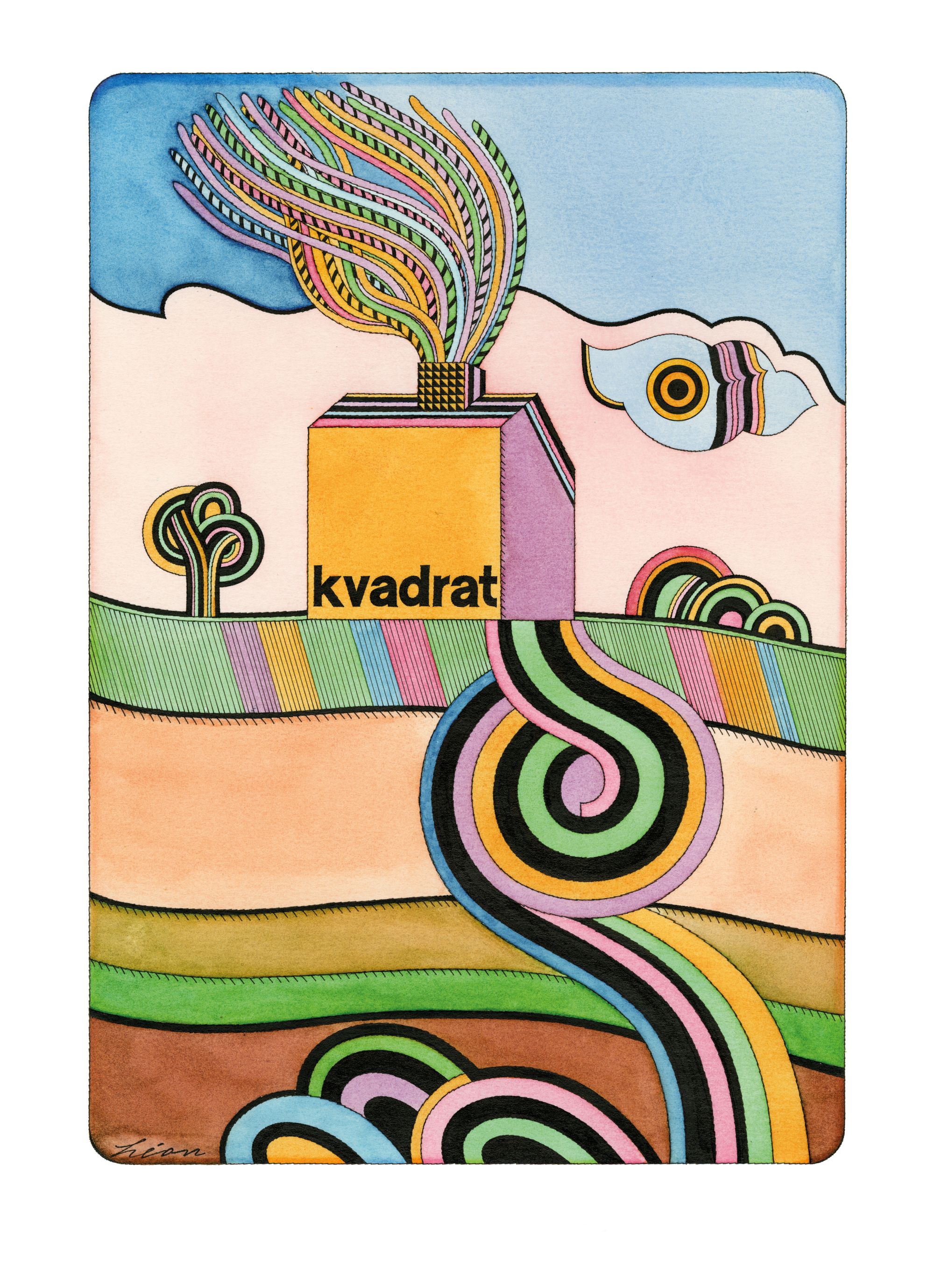
A 1965 painting by Leon van Roy, featured in Kvadrat’s first advertising campaign, is the mascot for Raf Simons’s new collection.
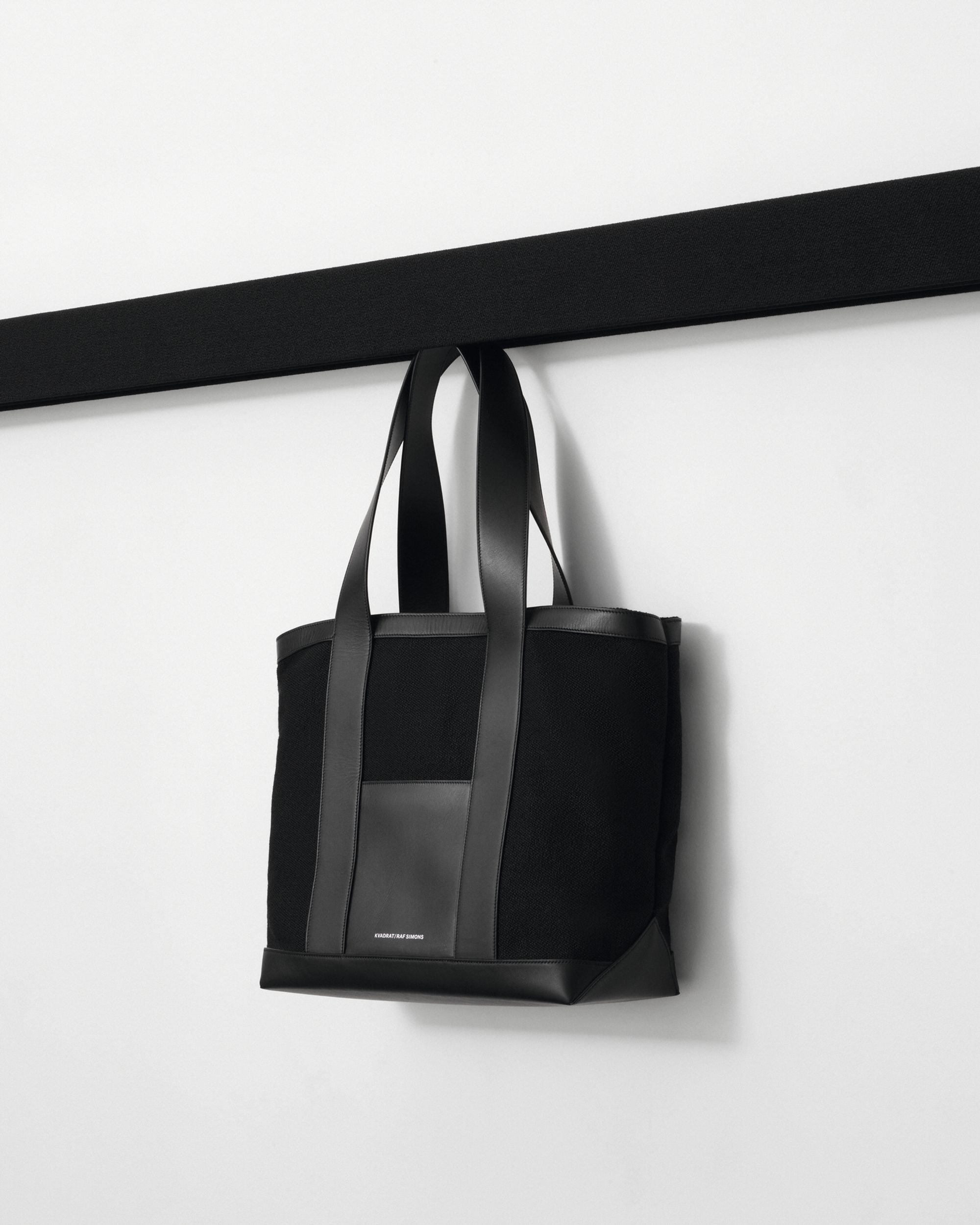
Vidar tote bag from Kvadrat/Raf Simons.
The reason for my visit is a new collection of domestic objects that Raf has designed for Kvadrat, the Danish textile producer with whom he has collaborated since 2014. The new release consists of 16 design pieces incorporating leather and Kvadrat textiles in the tones of pink, dark green, black, and off-white. The objects of this collection are unified by a simple idea: they’re intended to be read “as a series that could possibly belong together, while also working well individually, taking into account functionality and practicality,” as Raf puts it. “No preset rules.”

Shaker system from Kvadrat/Raf Simons.
Raf likes the balance he’s created between his creative process and domestic environment: none at all! He seems to be working all time: from home, from the office, in Antwerp, and in Milan; he creates his designs at night after a day spent in the office. “I am like a night creative!” he says. I keep repeating the word “studio practice” to refer to this approach that transcends the disciplines of fashion design and creative direction. This makes Raf smile. “You’re trying to find out if I have an art practice, aren’t you?” We both laugh. “No, I don’t. But I’d like to, obviously,” he replies to his own query. “I’m always doing some kind of things besides fashion anyway. I’ve been doing it for a long time, like this collaboration with Kvadrat — it is a huge, big, long project. We’ve been working on it for almost three years, I think. To me, it’s about having a dialogue, communication, and thinking process. And I always think better when I’m at home, especially in the evenings. Once you step into the company or you step into the studio, that’s everyday work.”
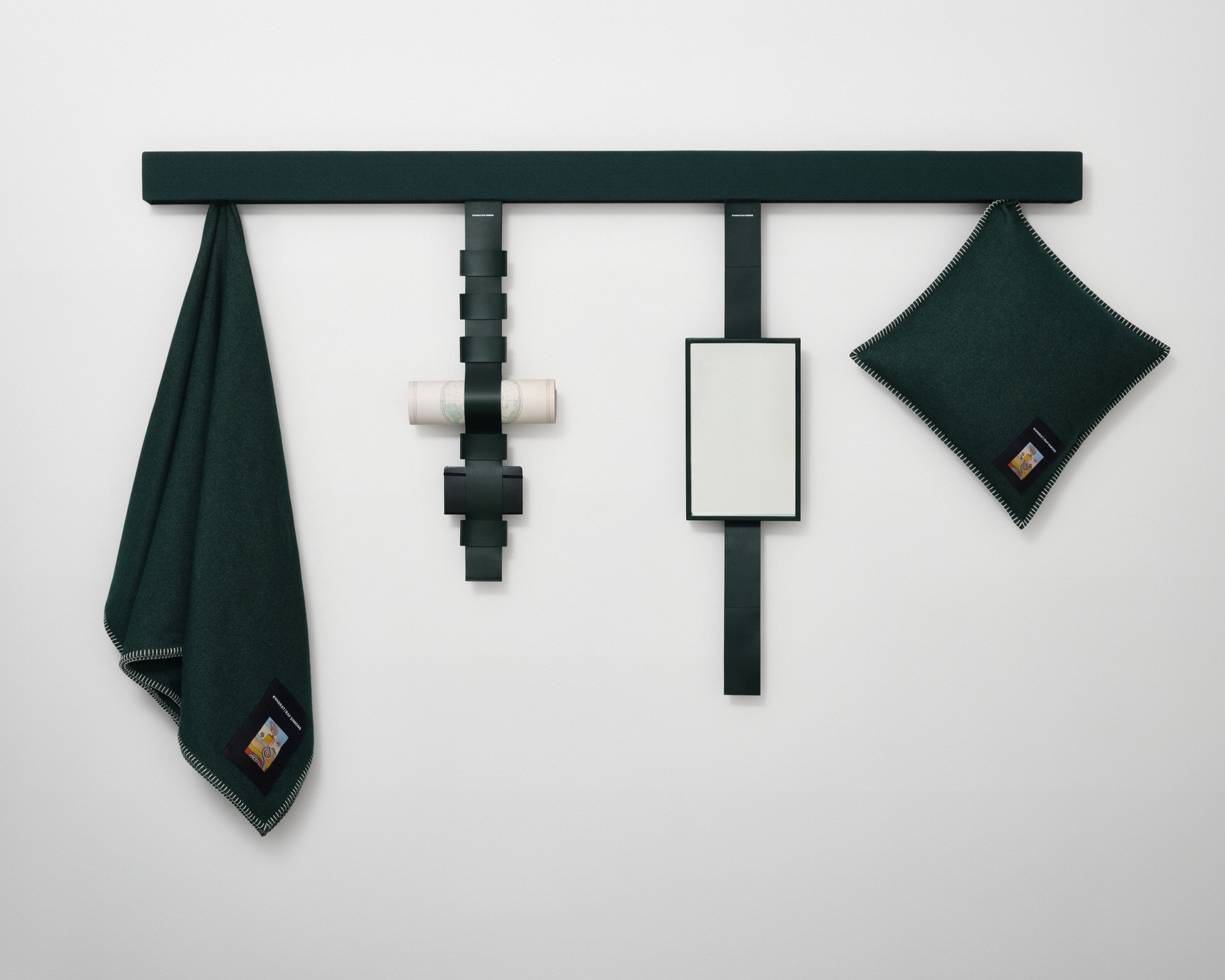
Shaker system from Kvadrat/Raf Simons.
Vogue Super Slims go by and I keep thinking that there aren’t many people like Raf. He thinks about “objects in relation to lives,” as entities existing at the periphery of human existence that also play a crucial role in defining it. This ontological attitude constitutes the common ground between his design and fashion practice, which you can see in his collection for Kvadrat, which includes a wide range of objects like keychains, boxes, magazine straps, tote bags — Raf is obsessed with tote bags —, lambswool throws, and cushions. “I’m a trained industrial designer and I work in fashion,” he explains, “So for me, it’s a matter of practicality, usage, and also of thinking about how to optimize how we live in this moment in time and how objects could accompany us in the future — that’s the ultimate criteria.” He thrives in designing “anything that relates to needs.”
Raf is interested in what he calls “forgotten objects.” If you think of fashion grails, you might remember his SS2013 set of keys, the AW 2017 duct tape, or one of the several keychains he’s released via his eponymous brand. These take the form of fashion paraphernalia, but all these objects play along the same notion of objects that “are forgotten because they’re everywhere,” as Raf puts it. In the collection he’s designed for Kvadrat, he not only created an entire ecosystem of objects but also a system to organize them in.
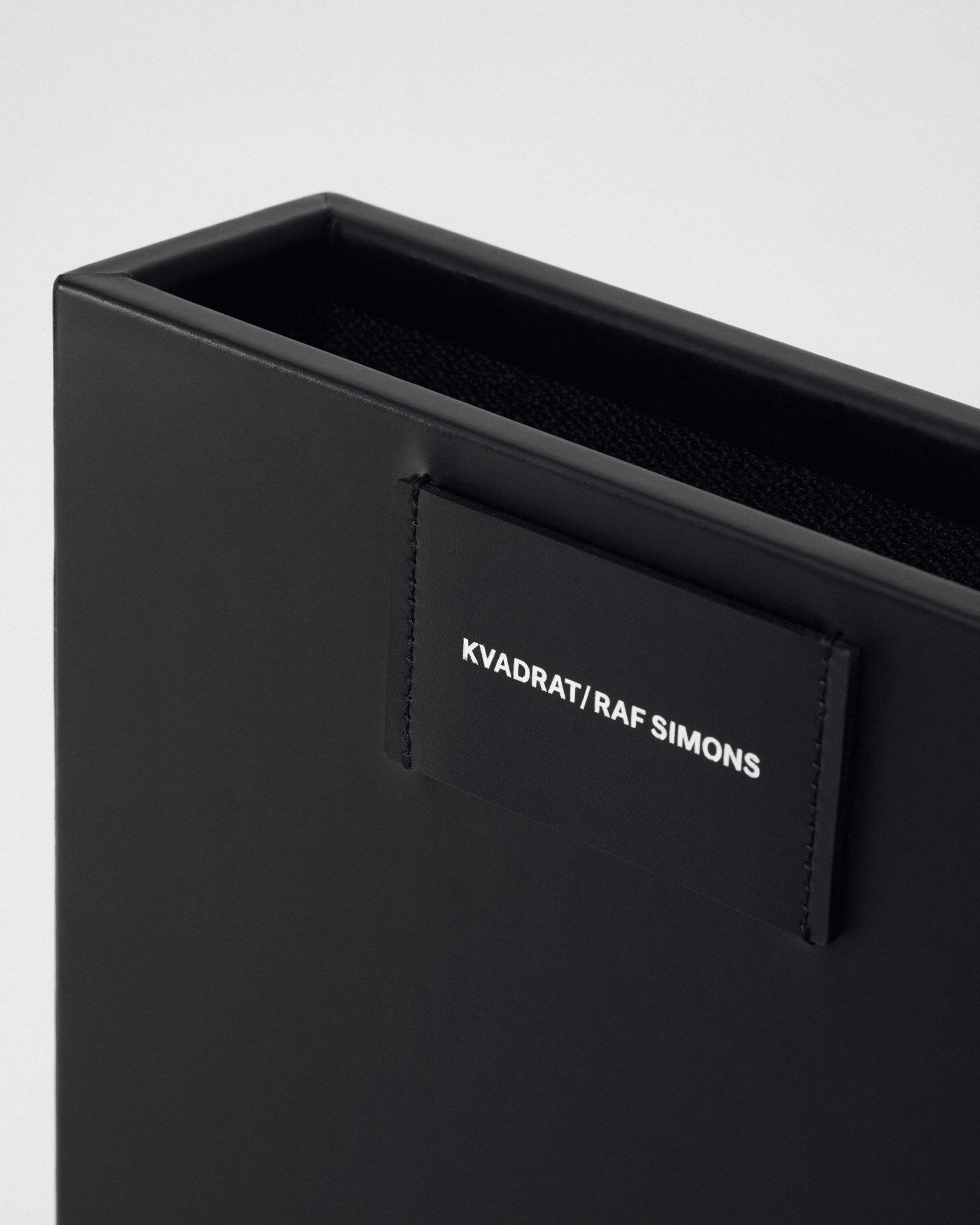
Leather accessory box in Black for Kvadrat/Raf Simons.
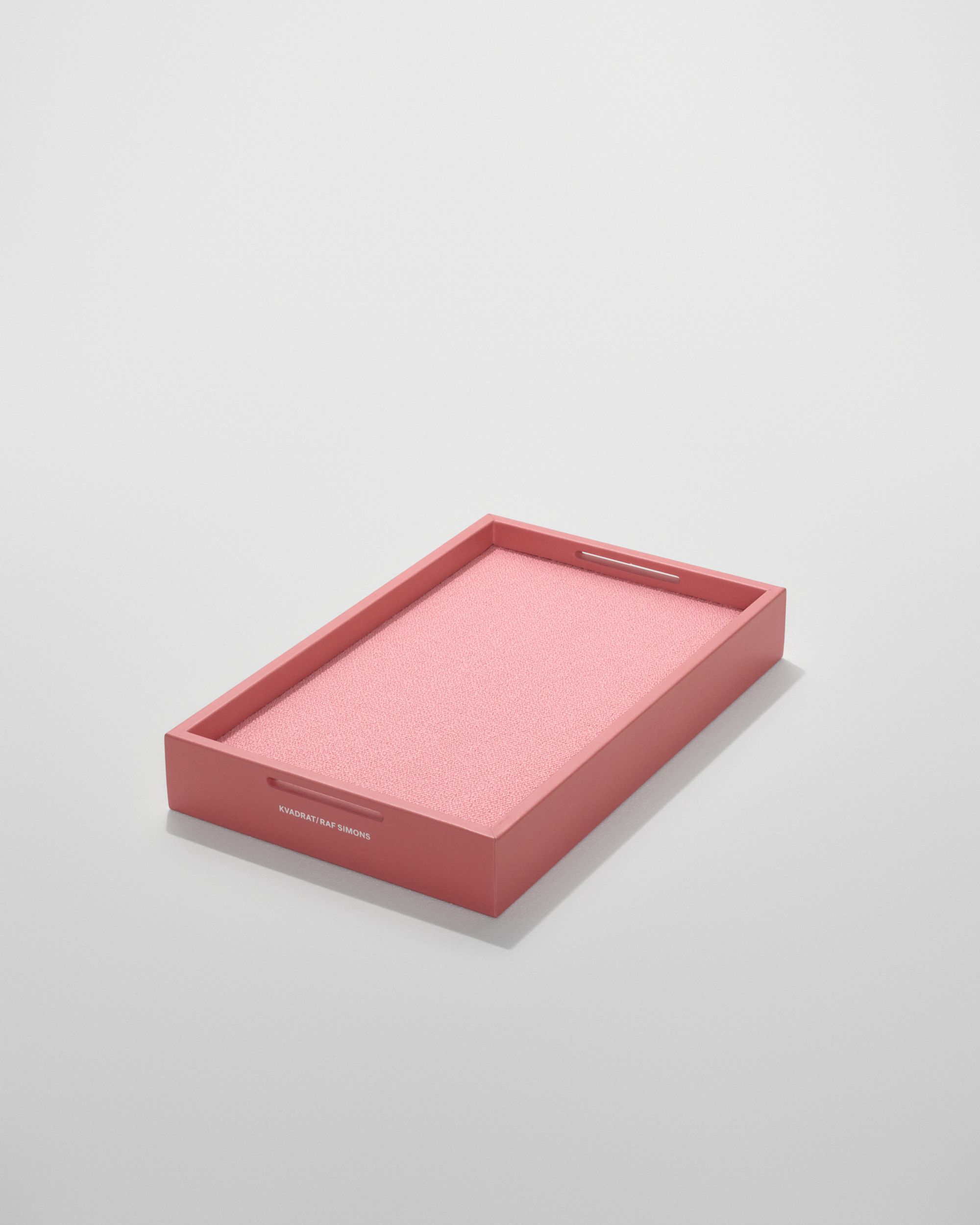
Leather mirror tray in Pink for Kvadrat/Raf Simons.
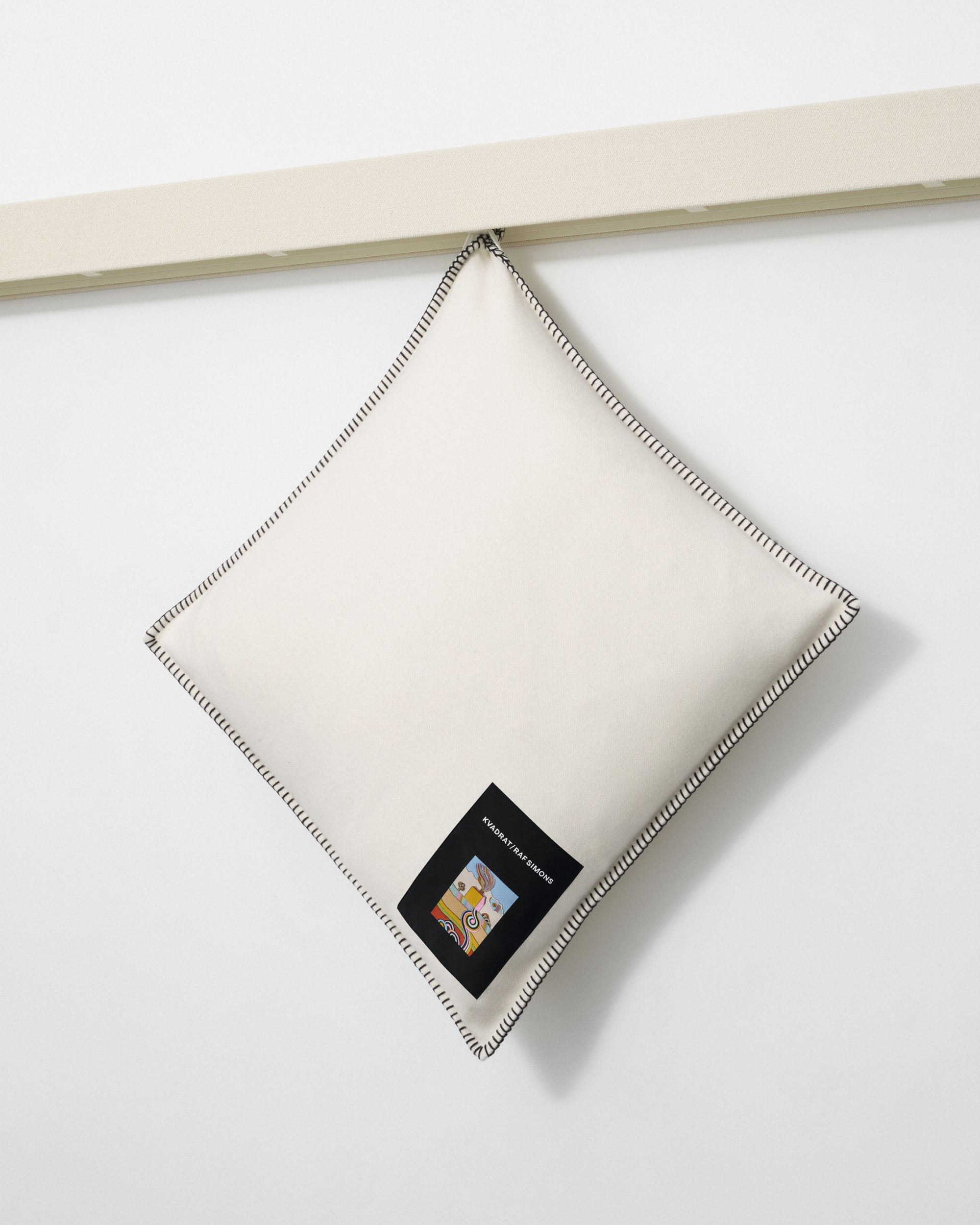
Lambswool Cushion in Off White for Kvadrat/Raf Simons.
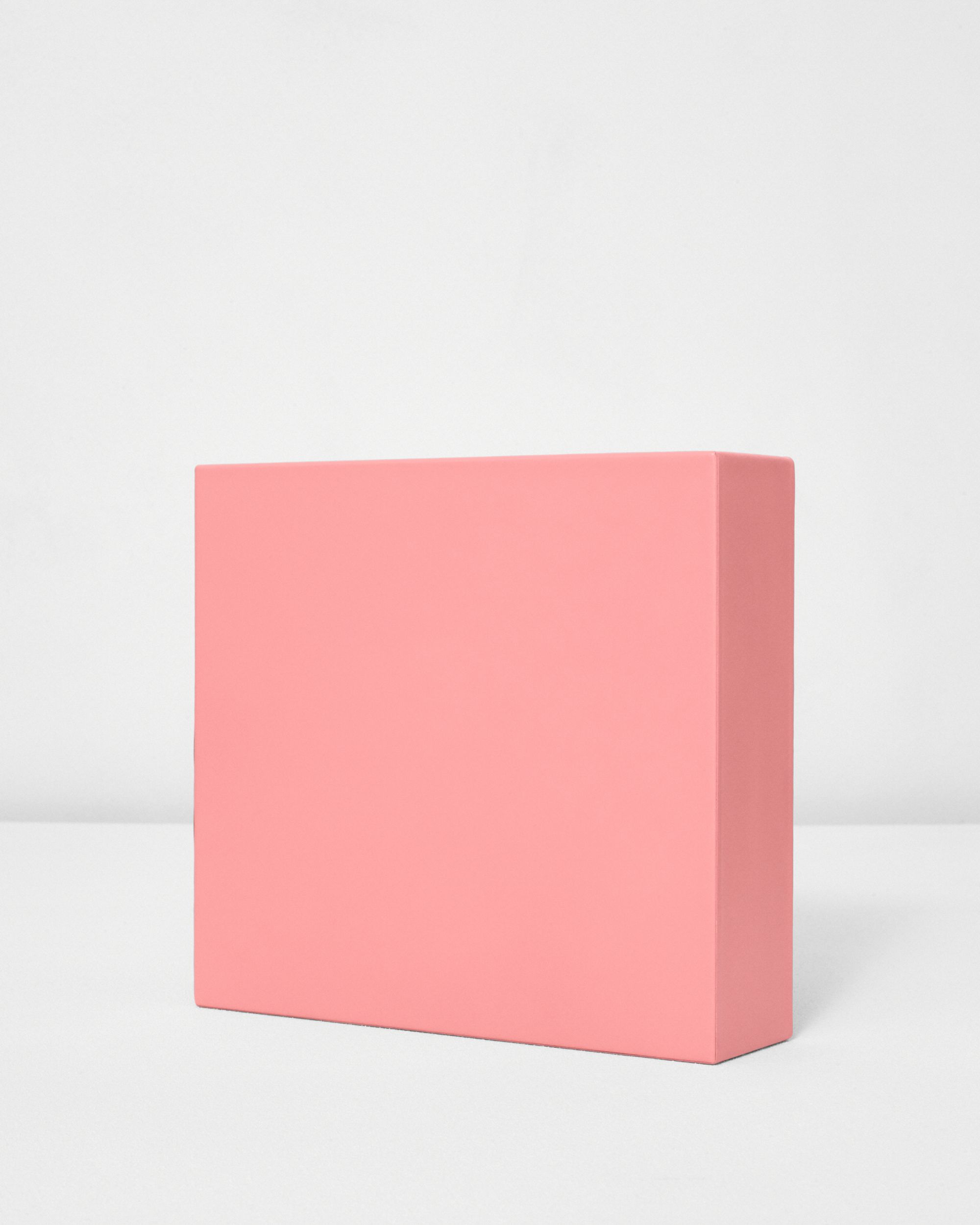
Leather accessory box in Pink for Kvadrat/Raf Simons.
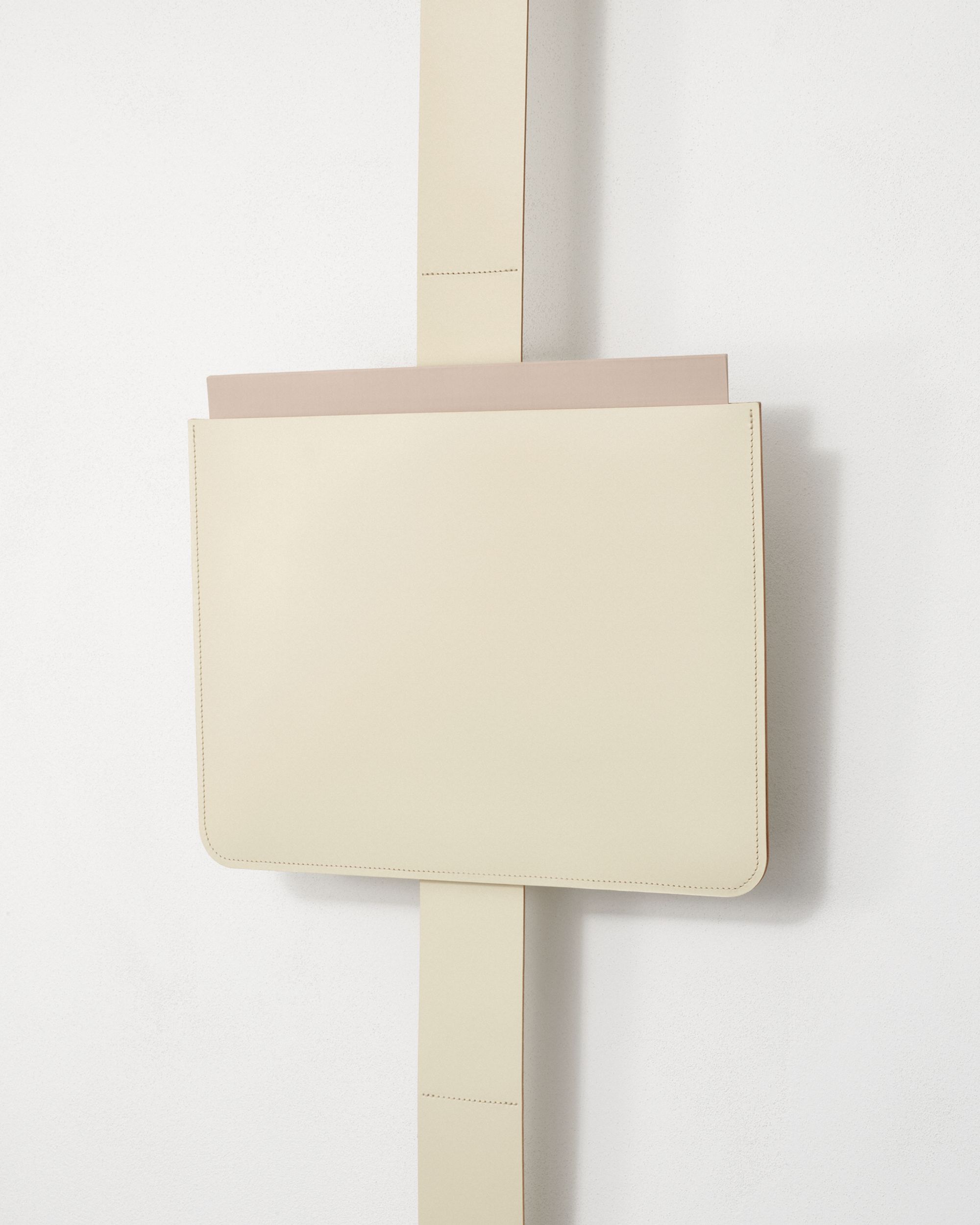
Leather sleeve Small with Leather strap in Off White for Kvadrat/Raf Simons.
The centerpiece of the collection is, in fact, what the Kvadrat .pdf presentation describes as “a horizontal bar made of powder-coated aluminum and upholstered in Vidar 4”— the iconic Kvadrat textile originally designed by Fanny Aronsen and revisited by Raf since his first collaboration with the company — on which any of the accessories can be hung. This item is titled “Shaker System,” and it’s inspired by the millenarian restorationist Christian sect and their design ethos. Raf’s concerns with functionality and mundanity circle back, filtered through a storage system the Shakers devised to arrange their belongings in their domestic setting. Raf describes the Shakers’ act of hanging chairs or other pieces of furniture on wall-mounted structures as “dumb genius.” To quote an essay from the catalog of the exhibition Shaker Design curated by June Sprigg at the Whitney in 1986: “Above all, Shaker life freed Believers from the whimsical prison called style.” I found this quote in a press release introducing the 2019 group exhibition Concerning Superfluities: Shaker Material Culture and Affinities organized by Essex Street gallery in New York — Raf was, of course, aware of it.
Jan Hoet, the Belgian curator and Documenta 9 director, was the first and major art influence on a 16-years-old Raf, who got to see a public art exhibition taking over the entire city of Gent, Belgium. “He took the art out of the context of museums and galleries to show it in domestic places with families.” It is something that Raf has thought about since his youth. Art-nerd mode, unhinged. I bring up Cady Noland’s metal bars, often wall-mounted, on which the artist hangs objects symbolizing American idealism and the consequent glorification of violence: a gun, a pair of handcuffs, the American flag, cowboy saddles… “There is no artist for me like her. So important it’s almost hard to talk about,” he shares.

Mario Merz's installation Chambres d'Amis, 1986. From S.M.A.K's 1986 exhibition Chambres d’Amis (S.M.A.K was founded by Jan Hoet). Photo courtesy of S.M.A.K / Dirk Pauwels.
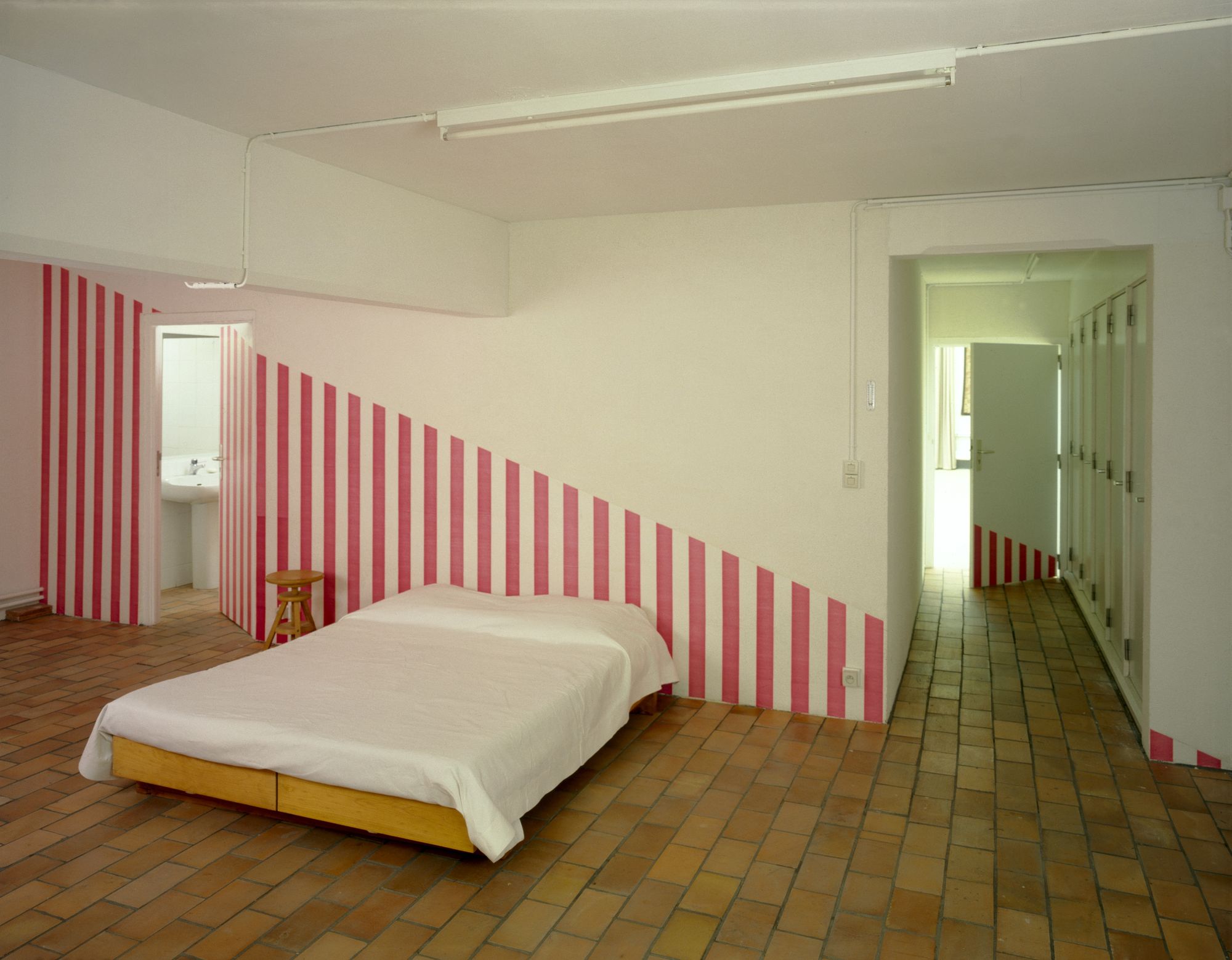
Daniel Buren's Le Décor et son Double, 1986. From S.M.A.K's 1986 exhibition Chambres d’Amis (S.M.A.K was founded by Jan Hoet). Photo courtesy of S.M.A.K / Dirk Pauwels.
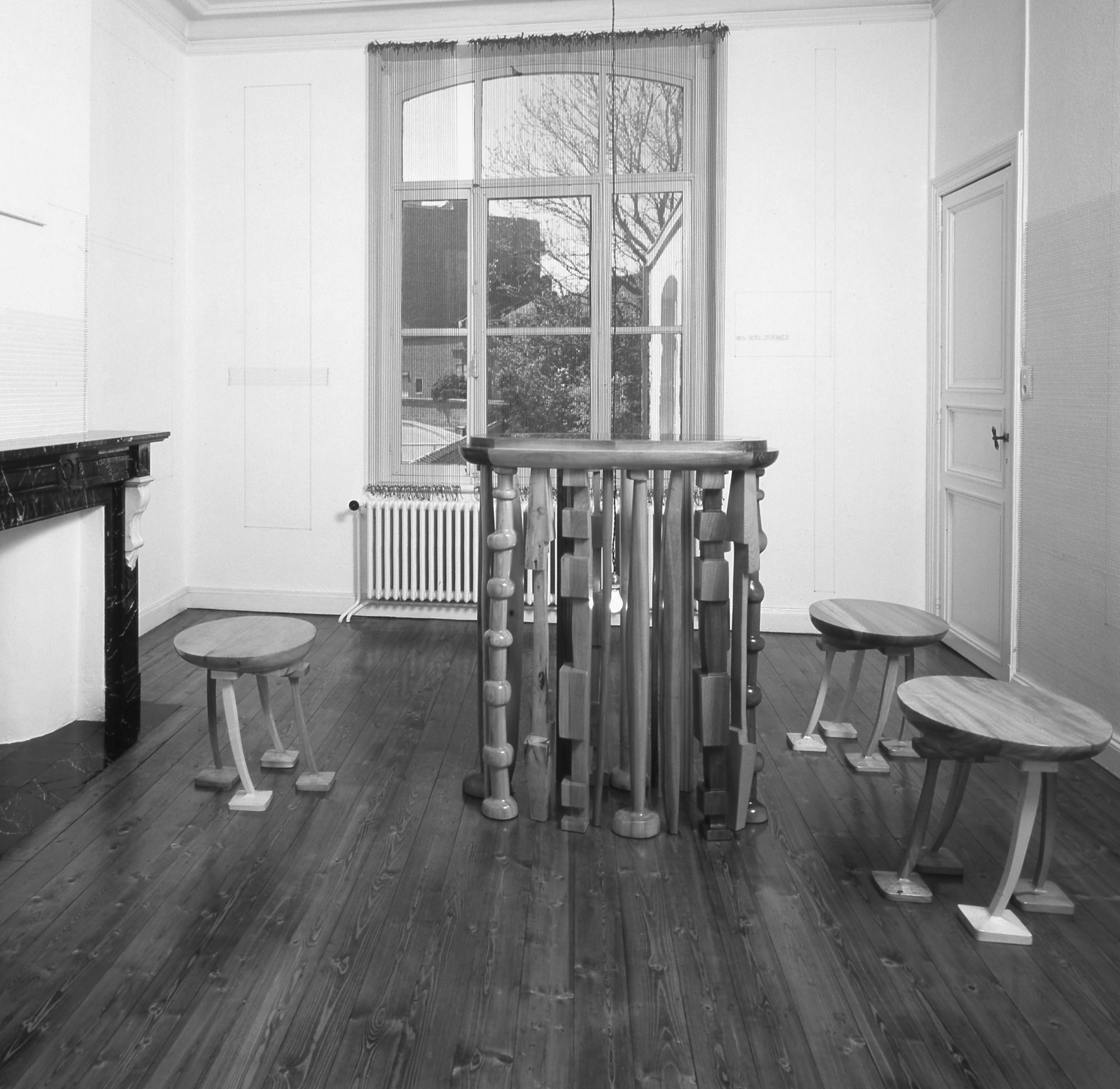
Oswald Oberhuber's Eine Chambre d'Amis für Victor Servranckx, Gent, 1986. From S.M.A.K's 1986 exhibition Chambres d’Amis (S.M.A.K was founded by Jan Hoet). Photo courtesy of S.M.A.K / De Gobert, Brussels.
We digress to Warhol, who’s been an obvious influence for Raf, and whose work he featured in his collections throughout his nearly two-year tenure as Chief Creative Officer of Calvin Klein (including in the home collection); Martin Kippenberger; Cindy Sherman (Simons collects her work); the myth of the Rockstar-artist; artists’ artists; the Venice Biennale. We’re nerding out so much that a Kvadrat representative comes to check in on us several times, so Raf skips his break before the following interview. The next journalist set to meet with Raf waits for minutes while we talk about a sculpture of a nude female figure whose head is formed by a colony of bees he’s about to have installed in the house.
I don’t know how Raf is going to handle a colony of living bees in his house, but I know that, like the reclining nude of the piece, his brain is a beehive: a synaptic super-organism that processes complex information, cross-pollinating diverse disciplines and inputs. Mr. Simons is wired differently: “It’s more in my system than anything else. Art. Way more than fashion.”